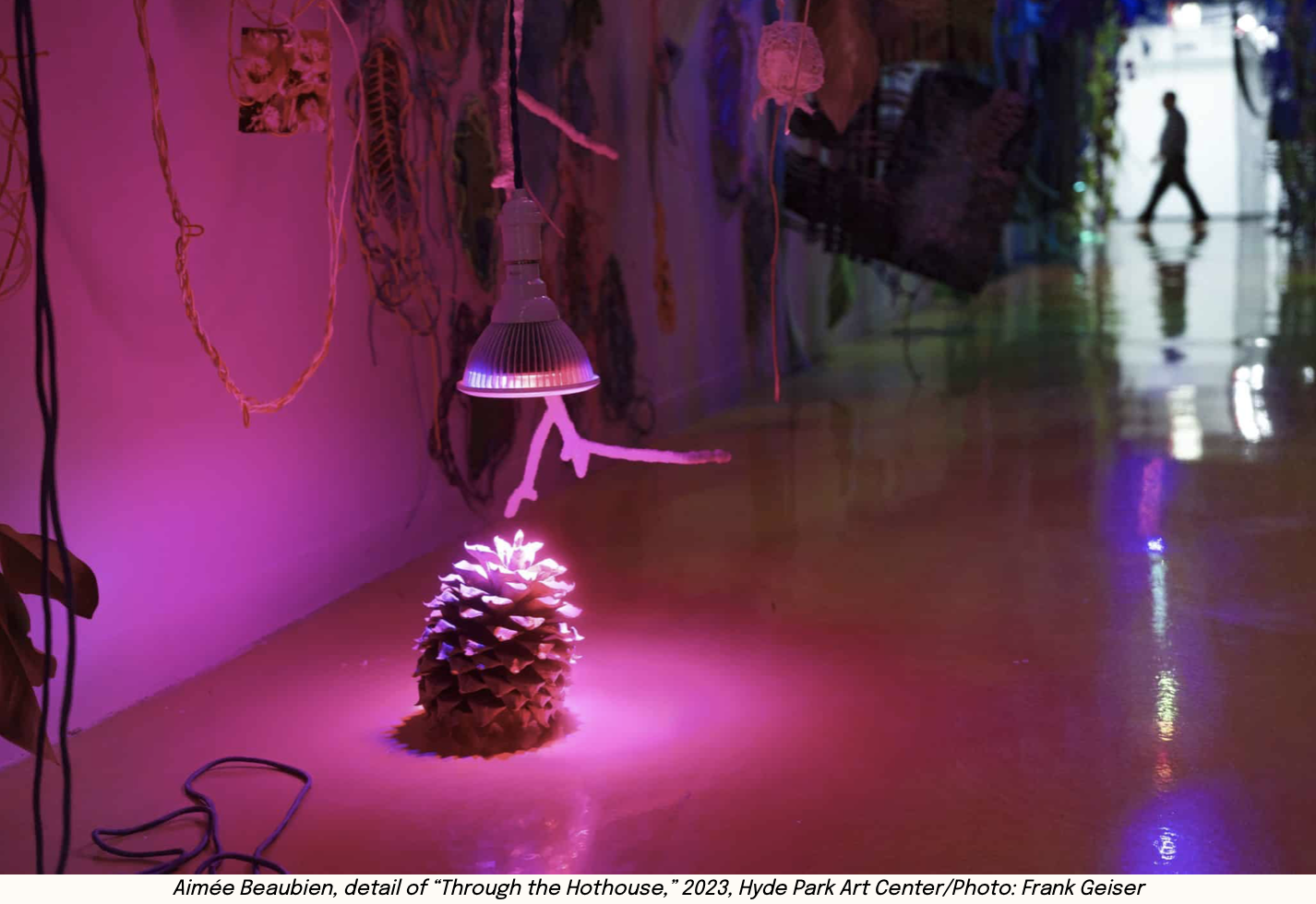If you spent an hour simply walking back and forth through the second-floor hallway in the Hyde Park Art Center that “Through the Hothouse” occupies, you might find something new every time you passed through Aimée Beaubien’s ninety-two-foot-long immersive installation. ““Through the Hothouse” briefly transports us through a hypersaturated plastic jungle where paracord vines hang from the ceiling and fabrics depicting otherworldly plants stretch around jumbled electrical cords towards multicolored lights. Beaubien’s hallway is a gauntlet of sensory overload interjecting itself between point “A” and point “B”—an unexpected journey squeezed into the gaps of a straight-line path.
The imagery of the “Hothouse” is colorful and dynamic, but it is also very artificial. There are real leaves hidden in the labyrinthine “Hothouse,” but it requires careful observation to notice them. Beaubien’s whimsical installation also functions as an anxious reminder of rising global temperatures and ecological devastation yet to come. The “Hothouse” feels either like a mystical forest illustrated with crayons and an overactive imagination or a synthetic hellscape carefully crafted from the remains of a world embalmed in plastic.
As I walked through the hallway a second time, a dried oak leaf encased in the scrawled lines of a plastic enclosure caught my attention amidst the tangles of cabling surrounding it. Beaubien has created several installations exploring the “Hothouse” since 2015; for this most recent version, she used a 3D printing pen to draw many of the shapes populating her hallway. Further down the path, my eyes were drawn to a different suspended leaf that upon closer inspection revealed itself to be a paper cutout. The vibrant lighting in Beaubien’s hallway is disorienting to the point that it conceals more than it reveals, but it also helps certain details stand out within the visual cacophony of the “Hothouse.” Resting on the floor near one end of the exhibition is a book lit by a cyan floodlight, titled “Garden Flowers in Color,” opened to a page with information on petunias. The artificial environment of the “Hothouse” makes the book’s cheery indexical language feel like a description of an extinct species.
Beaubien’s layered approach to this exhibition extends the practice of landscape photography from imagery to substance. “Through the Hothouse” also wrestles with the fallibility of descriptions as a stand-in for the real world: One needn’t stop and smell the printed petunias along the way.


